I'm an American who recently visited Italy for the first time. Here's why I'm glad I made the trip now.
I traveled from the US to Italy for the first time since COVID-19.
The flight, cities, and hotels all felt COVID-safe and there were surprisingly few crowds.
It was a once-in-a-lifetime experience to tour empty sites like the Vatican as if I had Italy to myself.
For the last year and a half, I didn't leave New Jersey due to the pandemic. This summer, I decided it was finally time and went to Italy. Although the trip took place a few months ago, the precautions and guidelines are still relevant at the time of writing.

In May 2021, Italy announced it would open its doors to passengers from the United States without quarantine mandates.
As someone who dreamt of traveling to Italy for years, I booked a flight to Milan with my mom and sister.
At the time, the only way to enter Italy was to quarantine for 14 days or take a government-approved COVID-free flight. I chose the latter, which required a negative test before departure, a self-declaration form, and another rapid test or proof of vaccination or antibodies upon arrival.
However, before our flight, the policy changed, and anyone from the US could enter Italy with proof of vaccination, antibodies, or a negative test.
Right now, as of publishing, US citizens may travel to Italy for any reason, as long as they present a negative PCR or rapid antigen test within 72 hours of arrival and proof of full vaccination or a medical certificate confirming recovery from COVID no more than six months before departure. Otherwise, they must self-isolate on arrival for five days and take a PCR or rapid antigen test. This policy, which is available here, is in effect until December 15, 2021, after which it is likely to change.
Going to the airport seemed the same as pre-COVID — packed and busy. The only difference was that everyone wore masks and security and check-in took longer.
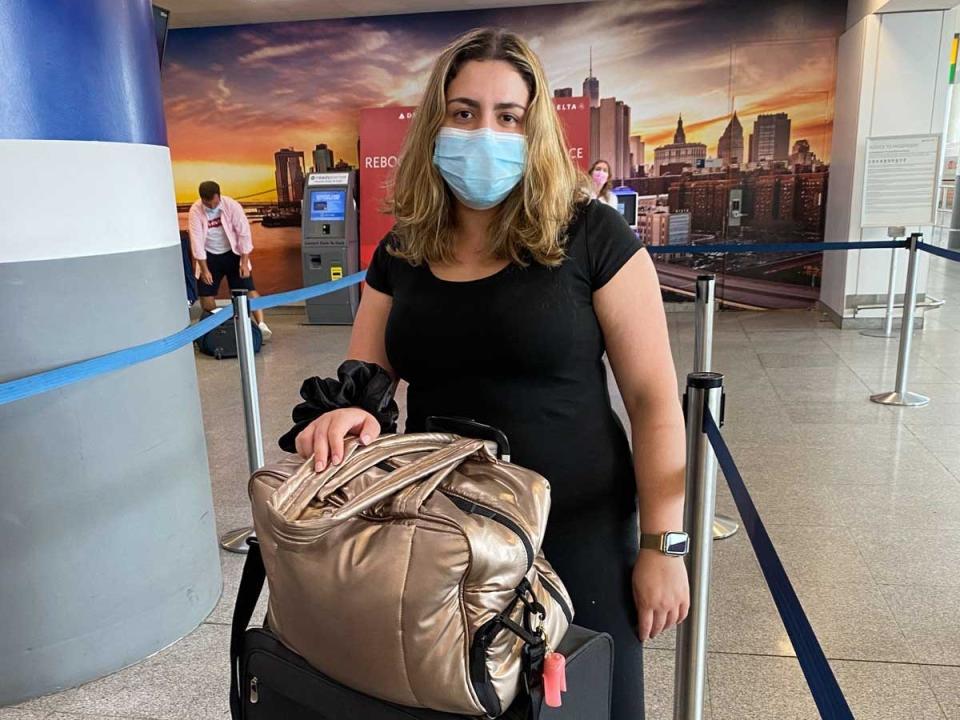
I flew out of JFK, and even a major airport like this one seemed understaffed. Check-in alone took almost two hours, and I still had to go through security. If you plan on traveling anywhere in the near future at a busy airport, I recommend adding extra time.
Indeed, JFK suggests on their website that domestic travelers arrive at least two hours before their flight, and international travelers should budget no less than three hours.
The flight felt like any other international one except masks were worn the entire time aside from designated meal times.
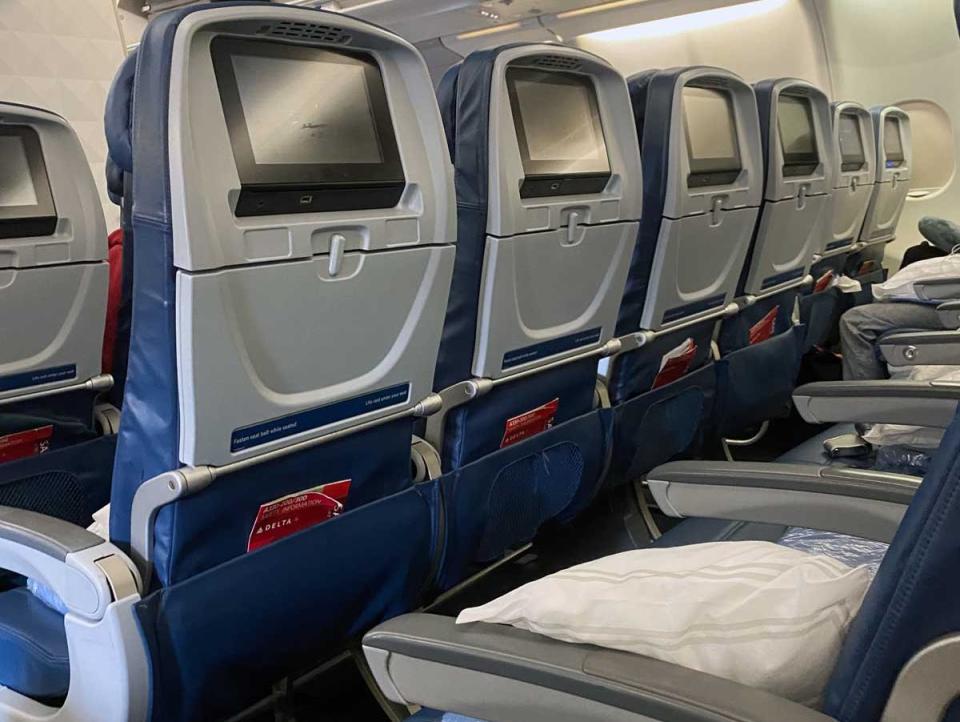
The flight felt similar to those I'd experienced pre-COVID, except that the plane felt empty and I had an entire row to myself.
I was also required to wear a mask, which flight attendants strictly enforced, reminding passengers whose masks fell off while asleep. This made me feel safer on the eight-hour journey, as my first flight since the pandemic did trigger a bit of anxiety.
Masks were only to be removed during meal times, of which there were two. The meals looked like they always have — a tray with a meal and drink — and afterward, masks were to be put back on immediately.
When we landed, passengers went through customs and a COVID screening area to show proof of vaccination.
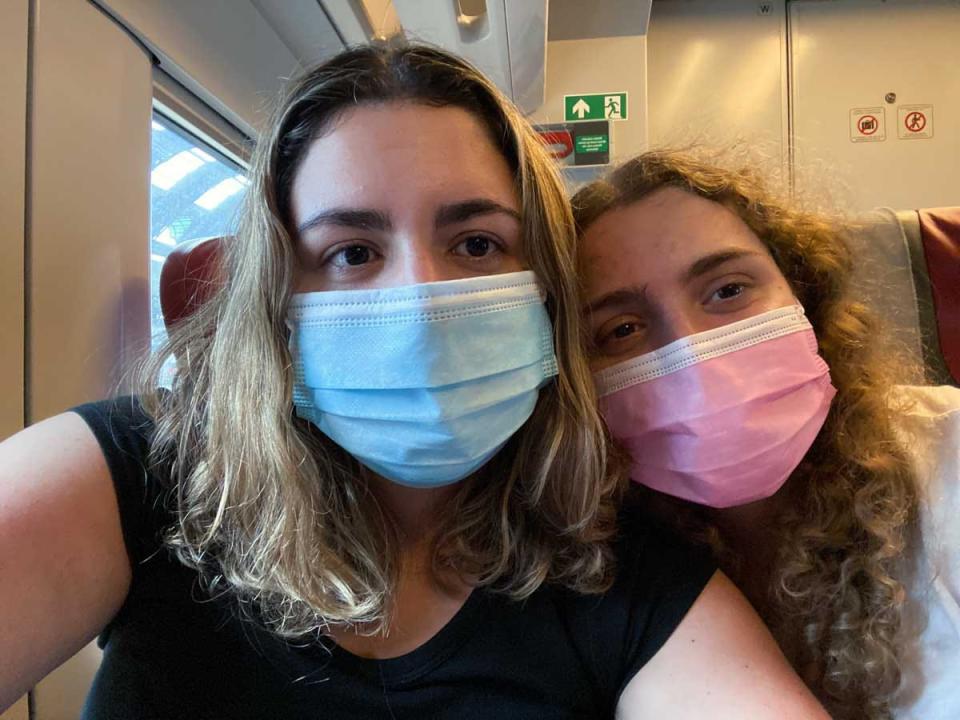
When we landed, we went through customs as usual, as well as a separate COVID screening area that was streamlined and easy to navigate.
The COVID screening checked thoroughly for vaccination cards and soon I had my luggage and was off to take the train from the airport to Milan's city center.
Milan was only a transfer point to reach Rome, and from the city center, I boarded another train to Italy's capital. At the time, everyone in the station and on the train was required to wear masks, whether vaccinated or not.
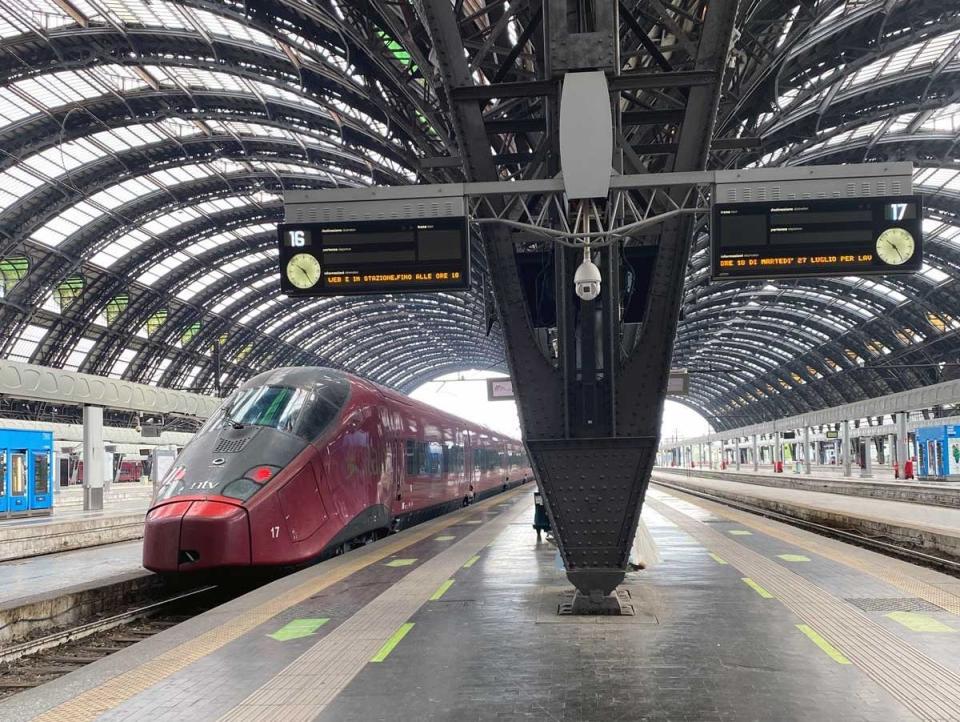
I noticed that the train station was busy, but not overcrowded. Everyone wore masks and seating was socially distant.
Upon arrival In Rome, I went straight to my hotel, which also had strict safety measures.
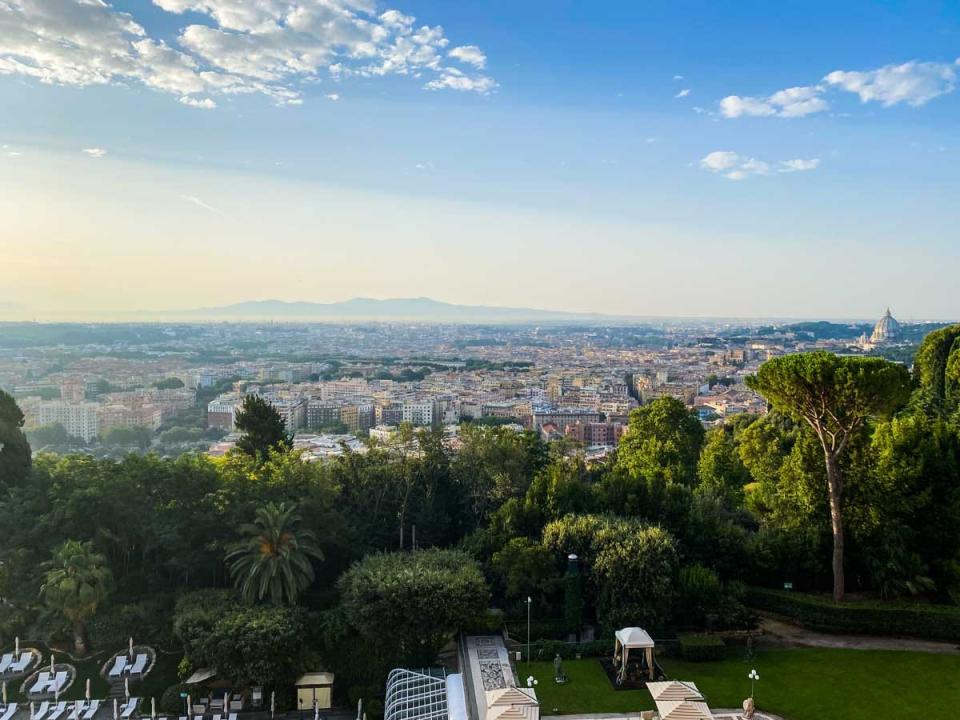
I booked a stay at Rome Cavalieri, A Waldorf Astoria Hotel, where everyone I saw followed the required masking policy, which required masks indoors, and elevators were limited to four people at a time.
When I ate breakfast outdoors, tables were socially distant and masks were not required unless dining indoors.
As a result, I felt extremely safe, even in public enclosed areas like the lobby and elevator.
Even with so many tourist sites in Rome, it didn't feel crowded.
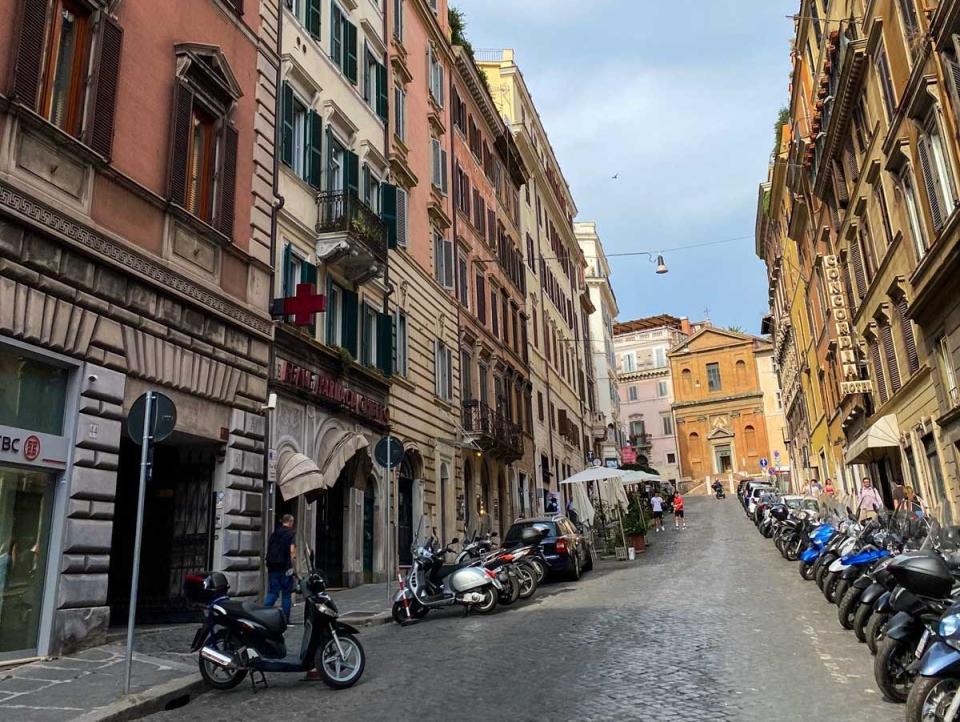
Rome has many tourist attractions — the Vatican, Colosseum, and so much more. However, even with so many popular sites, the city didn't feel busy.
According to security at each location, these historical destinations used to have hour-long waits (or more) to get in. During my visit, I found there was zero wait time at every attraction I visited, which was part of why the trip felt so special. I got to experience the city without crowds, a true rarity in a place like Rome.
The Vatican, in particular, was easy to navigate thanks to the decrease in crowds.
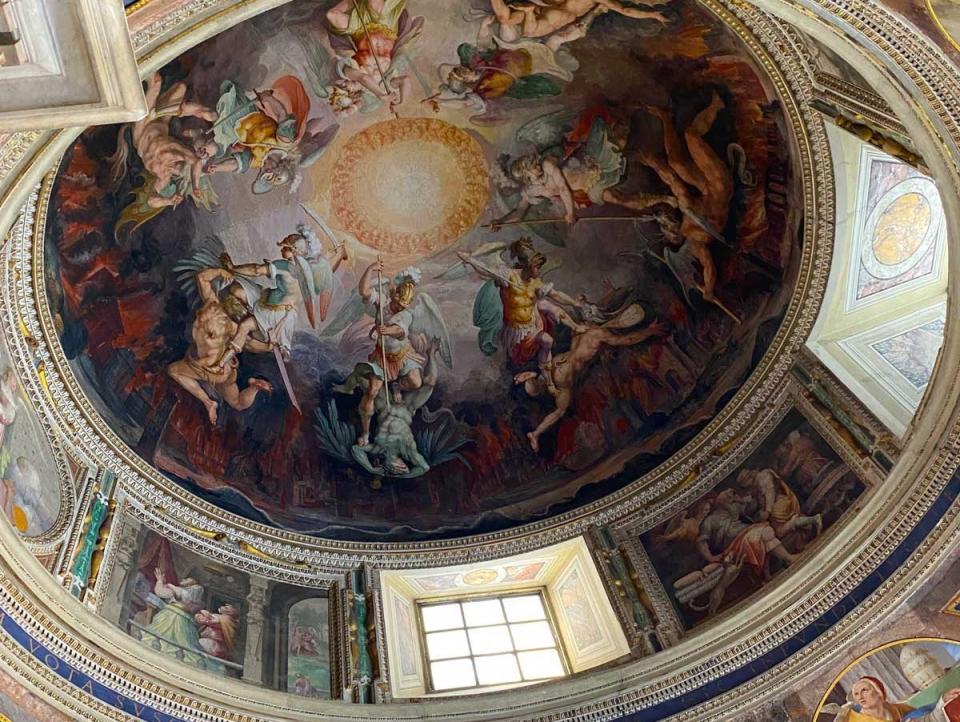
Before I arrived in Italy, family members warned me that the lines at the Vatican would be extremely long. So, I was quite surprised to find none and breezed through security with no wait.
Inside was also empty and I was able to fully appreciate everything. Masks were required to be worn throughout, and I saw the policy being enforced by security, in addition to many posted signs intended to remind visitors to keep theirs on.
My experience at the Colosseum was quite similar.
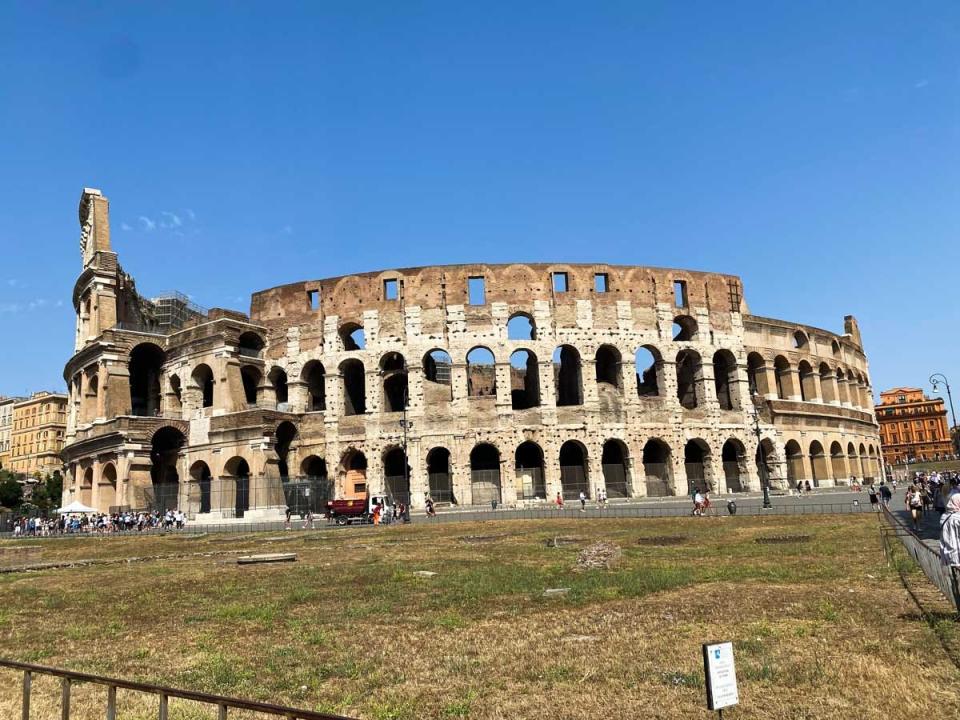
Similar to the Vatican, I expected heavy lines, long waits, and crowds in the Colosseum. However, there was no line to enter and I enjoyed a clear view of everything inside without having to peer over crowds.
Masks were also enforced by security and lots of signage, and for the most part, visitors wore one for the entire duration of their visit.
After Rome, we took a train to Florence for a 24-hour stay.
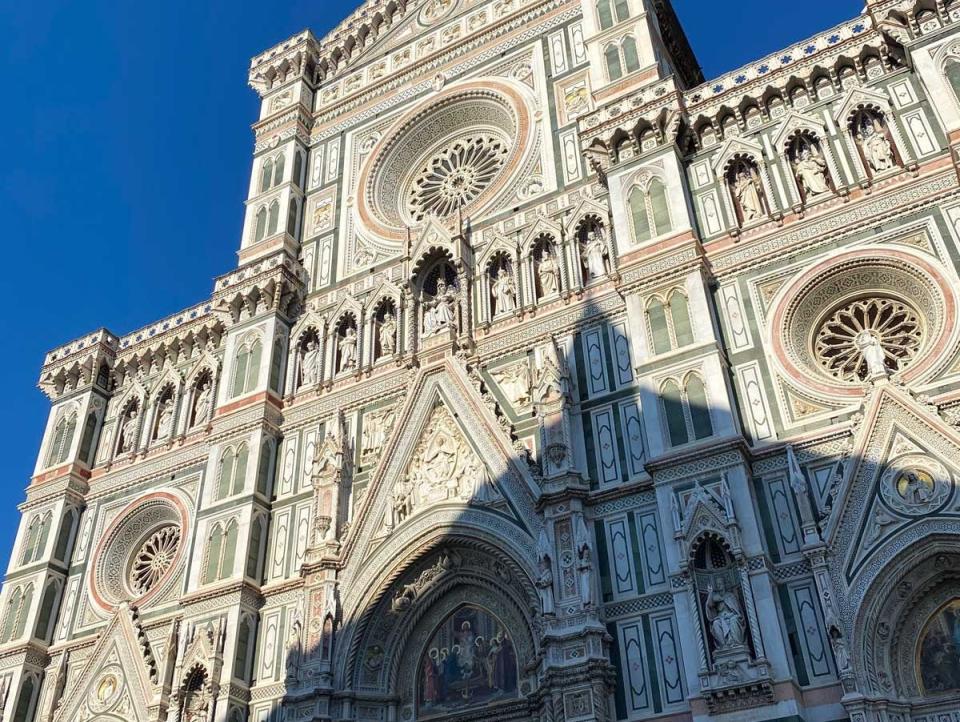
Like the other trains, masks were required on my journey to Florence, I didn't see anyone trying to fight the rule.
When I arrived, I found the city to be even less crowded than Rome.
From Florence, I took a side trip to Pisa to see the famous Leaning Tower. This was the only place where I experienced long lines.
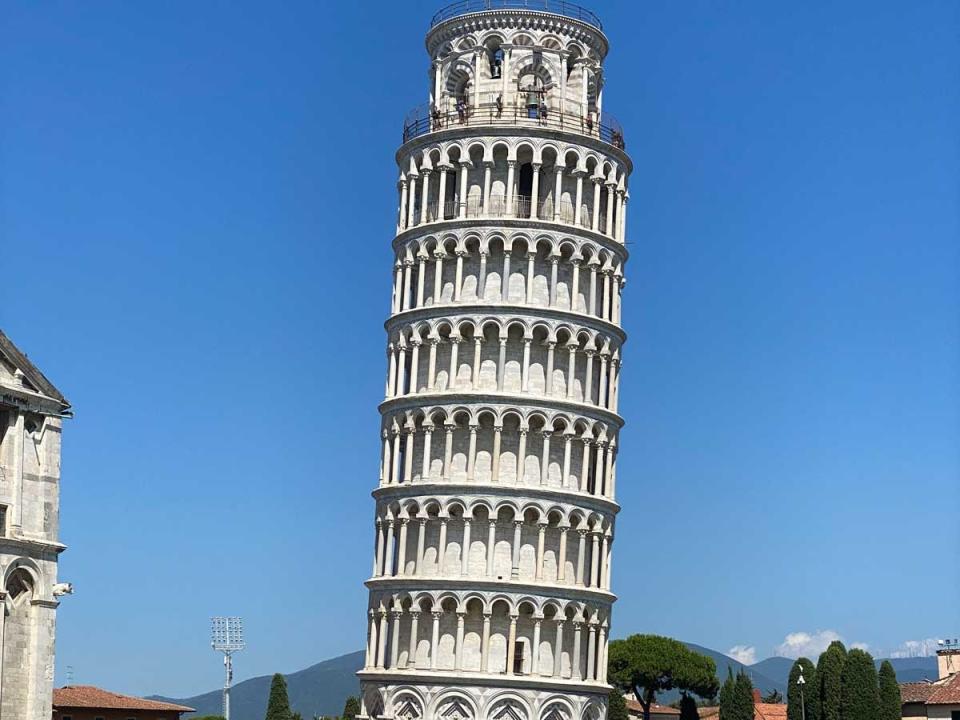
It seemed that all of the tourists in Italy were in Pisa as the famous Leaning Tower was the busiest site I experienced in Europe. As a result, I opted not to go into the tower because the long line incurred about a two-hour wait.
To avoid a wait, you can purchase tickets online in advance.
Back in Florence, locals recommended a visit to Piazza Del Michelangelo, but it was extremely crowded.
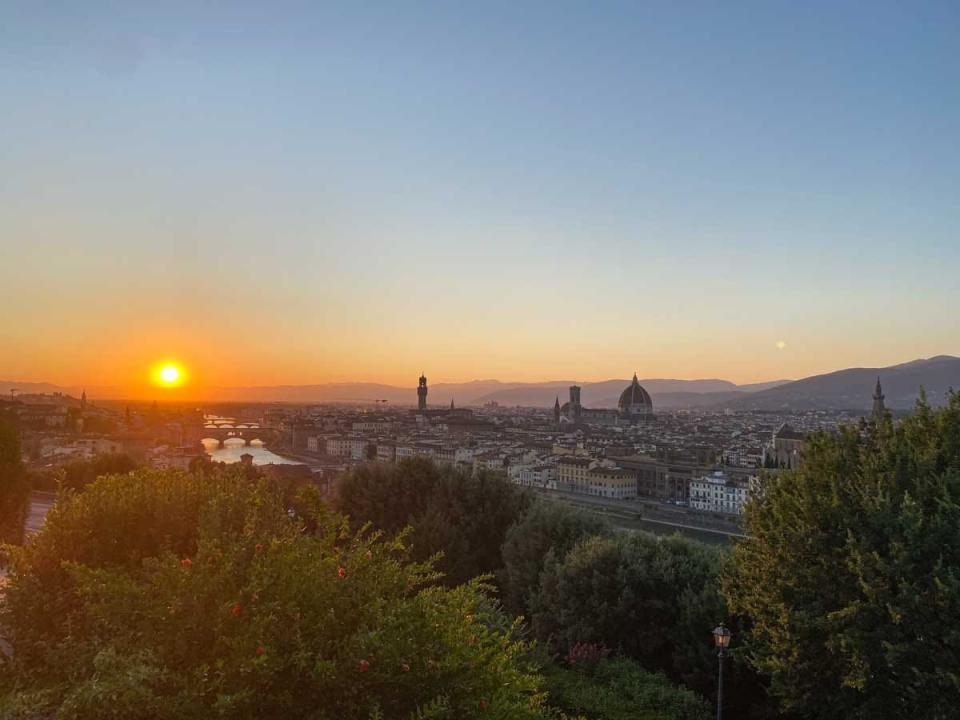
The piazza was breathtaking, especially at sunset, offering views over the entire city. However, the crowds were not worth it. I felt claustrophobic surrounded by so many people, despite the large space and there was very little mask wearing because it was outdoors. If I visited again, I'd opt to go earlier in the day when there are supposedly fewer crowds.
Next, I traveled to Venice.
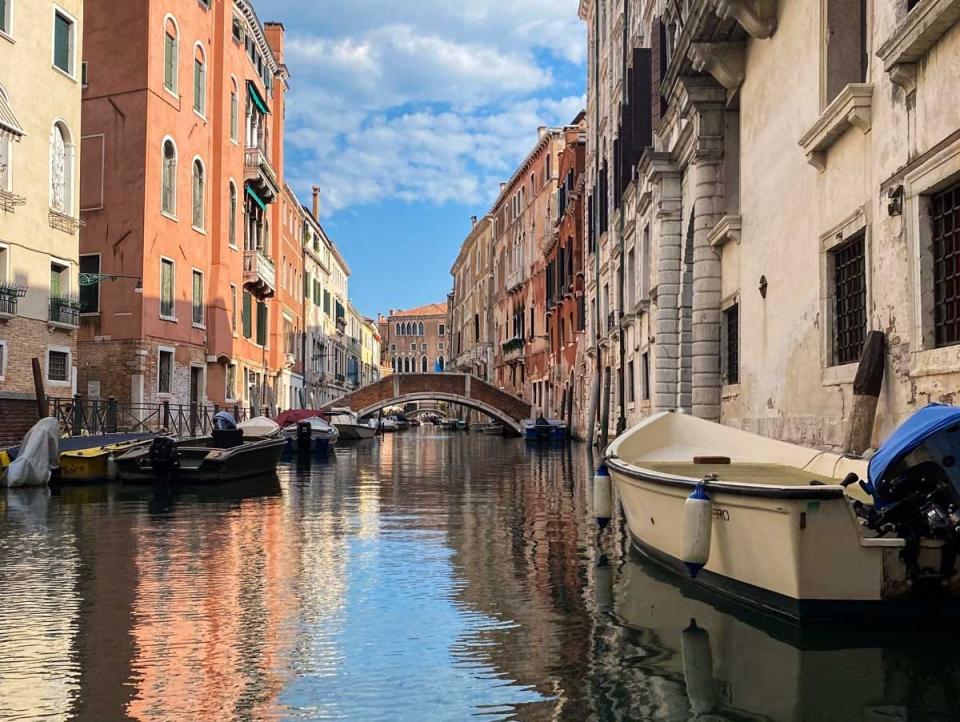
If I could spend the rest of my life in one place, I'd probably choose Venice. The city is breathtaking and, with no cars, the only modes of transportation are by boat or foot.
I took a gondola ride, and the driver said the city was experiencing a lack of tourists.

Our gondola guide told us that Venice remained much quieter than pre-COVID with far fewer tourists than was typical.
In Venice, I stayed in a hotel on its own private island.

I booked the JW Marriott in Venice, which is 15 minutes away from the main city by boat on its own private island. As a result, it felt like a personal oasis with no loud city noises.
I noticed that everyone at the hotel followed guidelines to wear masks and stay socially distant on the property and boat. The elevators were limited to two people at a time, and plastic screens were placed around the concierge and front desk area. It felt as if they followed COVID guidelines much more than we do in the US.
Finally, we returned to Milan before heading home. Our hotel also had COVID protocols.

Upon entry into the last hotel I booked, the Four Seasons Milan, my temperature was immediately taken, which didn't happen at any other hotel.
While I appreciated the extra step, Insider has reported that temperature taking as a COVID safety precaution is not accurate, and "may lull people into a false sense of security," calling it "nothing more than pandemic security theater."
In addition, masks were to be worn at all times.
In Milan, I visited its most popular attraction, the Duomo at night and during the day. It was empty at both times.
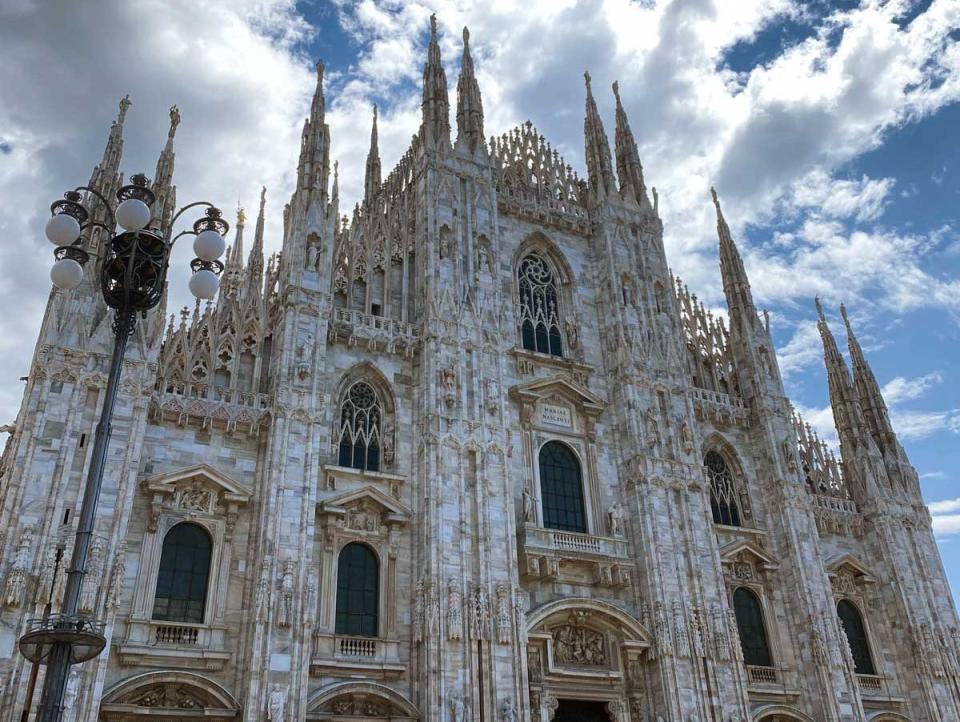
The Duomo is a gorgeous structure, unlike anything I had ever seen before. As a result, I wanted to experience it at night and during the day and found it to be without crowds at both times. There wasn't much mask wearing, however, it felt safe due to the large space and lack of people.
I did experience crowds in Milan, however, while shopping.
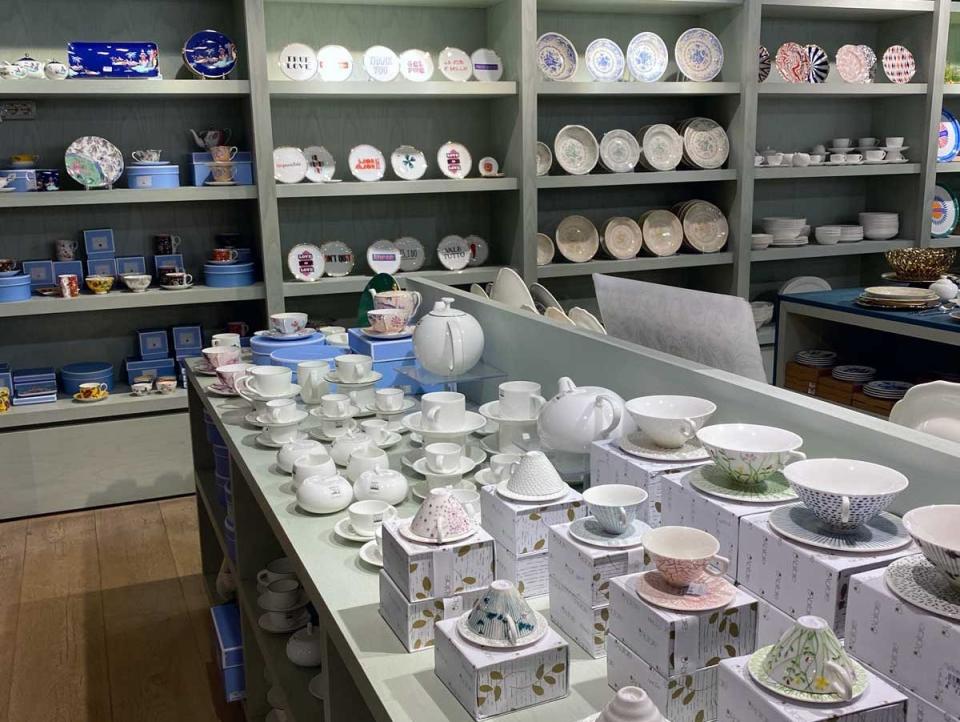
I popped into Italy's most popular department store, Rinascente, which had almost seven levels filled with beauty items, clothing, and home decor. It was one of the more crowded places that I visited on this trip.
Before heading back to the states, I took a COVID test at my hotel. The airport in Milan was less crowded than in the US.
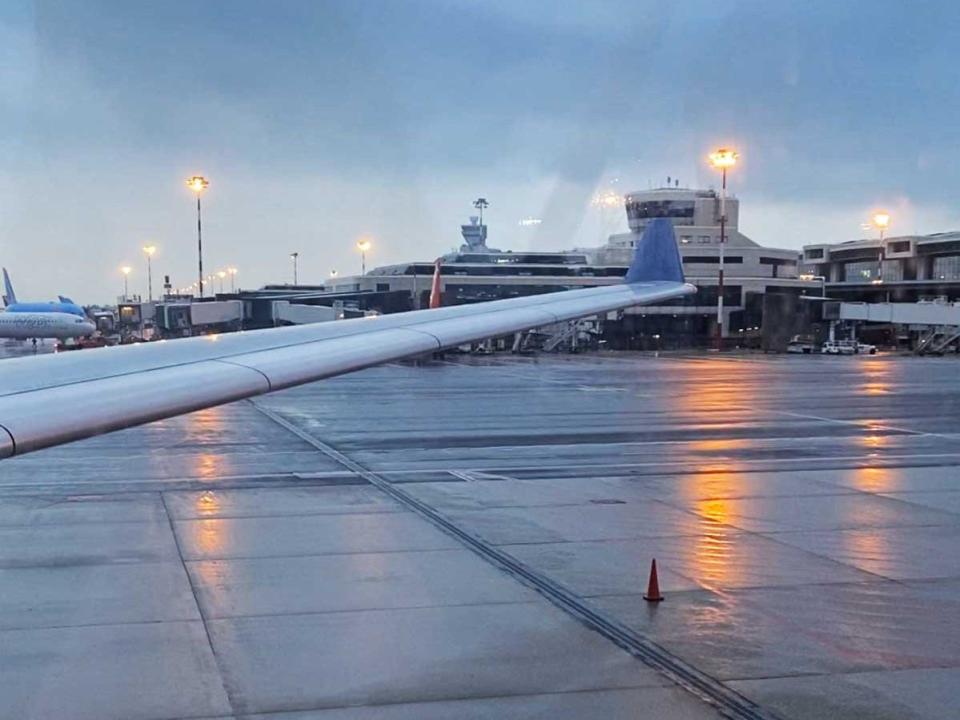
At the time, I was required to show a negative COVID test before returning home, which my hotel offered.
At the airport in Milan, I showed my negative test results and answered a slew of questions before going through security. The airport was less crowded than in the US but had similar questioning and restrictions. I also thought it was more streamlined than back home, and I experienced fewer lines and was able to avoid crowds of people.
As for the flight, it was the same as on the way to Italy, albeit with far less excitement in the air.
Read the original article on Insider

